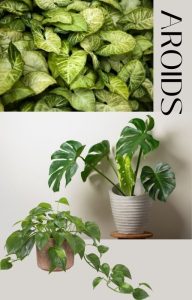Poisonous Plants in and Around Your Florida Home.
Disclaimer. The following information is intended for use in Duval County. Florida is a diverse state with different growing conditions. If you garden outside of Northeast Florida, check with your local UF/IFAS Extensions agent for assistance.
As the nights draw in, we turn out thoughts to the Holidays and time with family. Some families share traits. We thought it prudent then to warn you about some families that are not only dangerous but deadly.
INTERIOR PLANTS
Many popular house plants are in the aroid family. All parts of the aroids contain calcium oxalate crystals, which cause pain and burning when eaten. Some common aroid houseplants include arrowhead vine, pace lily, monstera, pothos, dumbcane, philodendron and Chinese evergreen.
Other interior plants that are poisonous to pets and people are cyclamen, amaryllis, and jade. Jane is extremely toxic to cats and can cause death is left untreated.
LANDSCAPE PLANTS
-
The Lily Family

— All plant parts of true lilies (not calla lilies or crinum lilies) are toxic to pets. They are extremely toxic to cats. The most toxic to cats include Asiatic lilies, daylilies, Easter lilies, stargazer lilies and tiger lilies.
-
 The Euphorbia Family
The Euphorbia Family– These have a latex-white sap that is a skin irritant. Some common euphorbias are copper leaf, devil’s backbone, croton, crown of thorns, poinsettia and chenille plant.
-
The Cycad Family
– Seeds from cycads are very toxic. Ingesting 2 -4 seeds can be fatal to your pet. Coonties, cardboard palm and sago palms are all cycads.
-
The Nightshade Family
— Members of the nightshade family contain alkaloids which can be toxic for people and pets. Ornamental pepper plants, yesterday-today-tomorrow, and angel trumpet are all nightshades, and lethal in the wrong hands.
-
The Dogbane Family
– Most have milky sap. Some plants are more poisonous than others. Plumeria, star jasmine, and milkweed are dogbanes, as are allamanda, amsonia, and hoyas. Oleander is the most potent of the pack.
Other landscape plants that been found to have toxic properties include Hawaiian ti, Carolina jessamine, gloriosa lily and golden dewdrop.
PLANTS FOUND IN NATURAL AREAS
The Cashew Family
Poison ivy poison oak, and poison sumac are all in the cashew family and can cause major skin irritation.
Baneberry, chinaberry, castor bean plant, and pokeweed can be found in natural areas in Florida. All have toxic berries, fruit and seeds. The water hemlock is a native plant found in wetland areas and can be fatal if consumed.

This article was written by Duval County Extension Agent, Tonya Ashworth and presented at the 2023 MGV NorthEast Regional Conference.
 1
1




